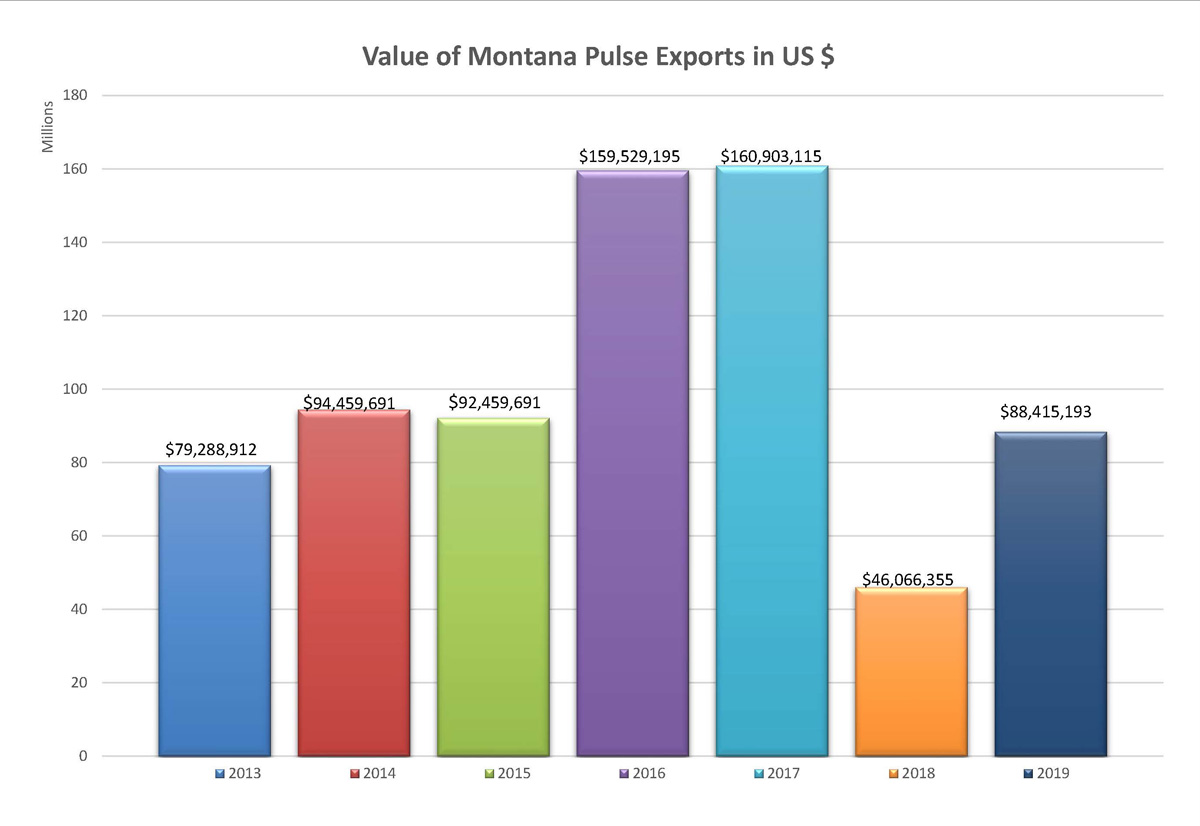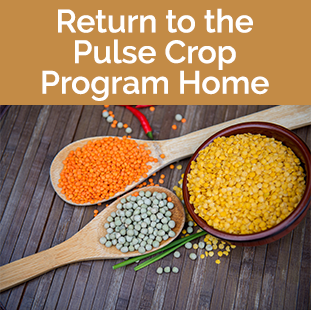Grow Montana Pulses
Many factors are driving the growth of the pulse industry in Montana. One factor is improved availability of information. The links below provide access to a wide array of useful resources for pulse growers on the following topics: industry dynamics, market information, and crop production guidance.
Statistics show that the total acreage of chickpeas, dry peas, and lentils in Montana is expected to ride by nearly 1.5 million acres by 2019.
Along with acreage increase, we are also seeing a rise in revenue generation for farmers who are exporting pulse crops.
Rising export revenue for Montana farmers .
The market for pulse products is diverse and global. Montana currently exports whole pulses to countries such as India, Japan, and Pakistan where pulses are a major food staple. The properties of pulse ingredients open the doors wide to opportunities for product development as well. Pulses can be milled and separated (fractionated) into highly functional components (protein, fiber, and starch) utilized to enhance processed foods in domestic and global markets.
County Acreage Maps
To view pulse crop acreage at the county level categorized by crop type, click on the year's data you would like to review. The Montana Department of Agriculture created these maps using USDA Farm Service Agency reported acres data, and has access to this data for the past seven years. To see previous years data, please contact Weston Merrill of the Montana Department of Agriculture.
Links in the list below will open/download the maps in PDF format:
- Maps: 2019 Pulse Acreage Numbers
- Maps: 2017 Pulse Acreage Numbers
- Maps: 2016 Pulse Acreage Numbers
- Pulse Trends & Fallow Acreage: Graphs & Maps (2016)
- Maps: 2015 Pulse Acreage Numbers
- Maps: 2014 Pulse Acreage Numbers
- Maps: 2013 Pulse Acreage Numbers
View/download 2019 Peas Acreage Map (.jpg format).
View/download the 2019 Lentils Acreage Map (.jpg format).
View/download the 2019 Chickpeas Acreage Map (.jpg format).
Montana Pulse Nutrition and Feed Analysis
The nutritional benefits of pulses are outstanding, both as whole and fractionated food products for humans and as feed for livestock of all kinds.
We also compiled a nutritional analysis of yellow peas, as well as a finished feed analysis of yellow peas. The numbers speak for themselves! If you are interested in the nutritional content of other pulse crops, contact Weston Merrill.
Pulse Research and Development
The Montana Department of Agriculture authored a paper which discusses the current and potential future impacts of pulse production in Montana.
Read the full Montana Pulse Industry Report.
Interested in accessing funds to determine if pulse products can increase your farm's bottom line? Research funding will be available through the US Dry Pea and Lentil Council (USADPLC).
Pulse Crop Delivery Points
Click on a dot on the map below to get information on Montana Pulse Facilities



